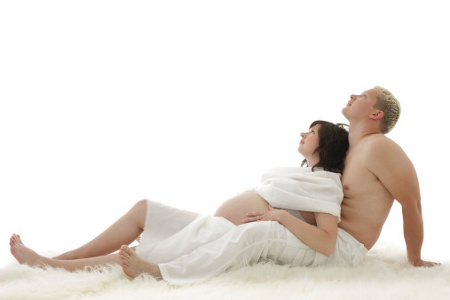Alternative Birthing Methods
0 Comments
Water Birth
Water birth is an alternative birthing method first introduced to the United States in the early 1990s. Under the supervision of an obstetrician or midwife and in a specially designed birthing tub, a woman can choose to labor in a warm tub of water and get out for delivery or remain in the tub for both labor and delivery. This birthing option is based on the fact that the baby has been submerged in fluid within the amniotic sac for nine months. Water birth provides a soothing and relaxing experience for the mother, which promotes more efficient uterine contractions, stimulates the release of endorphins, which are natural pain relievers, and relaxes the perineum thus reducing the incidence and severity of tearing during delivery. Potential risks include water embolism, water aspiration and snapping of the umbilical cord during delivery. Some contraindications include breech presentation, maternal diagnosis of herpes, toxemia or preeclampsia, multiple births and anticipated preterm labor of two weeks or more. Photo: Getty Images

The Bradley Method
The Bradley method is a husband-coached natural childbirth method developed by Robert A. Bradley, M.D. in the late 1940s. The philosophy is that childbirth is a natural process and with adequate education, preparation and supportive coaching, a woman can give birth without drugs or surgery. Classes are taught by teachers trained in the Bradley method, are conducted during the last trimester of pregnancy and last for 12 weeks. The classes focus on nutrition, the changes associated with pregnancy, role of the coach, stages of labor and developing a birth plan. Supporters of this method believe that couples who complete the training course are more likely to give birth without the use of epidural anesthesia, pain relieving medication, and surgery. Photo: Getty Images

HypnoBirthing
HypnoBirthing is the trademark name for a child birthing education program, also called the Morgan Method. The concept focuses on the ancient philosophy of birthing and was introduced in 1989 by Marie Morgan, M.Ed., a hypnotherapist. Trained HypnoBirthing instructors teach women and their child birthing partners relaxation techniques, how birthing muscles work and to use their natural birthing instincts. The goal is a calm, serene and comfortable birth. Supporters of this method believe that “in the absence of fear and tension, or special medical circumstances, severe pain does not have to be an accompaniment of labor.” The mental state of a woman using this method is similar to daydreaming or focusing that occurs when engrossed in a book. Photo: Getty Images

Lamaze Method
The Lamaze method of natural childbirth was introduced in 1951 by Fernand Lamaze, M.D. This method consists of childbirth education classes attended by both the woman and her child birthing partner. The Lamaze method allows labor to begin on its own, encourages walking and changing position throughout labor, has a loved one present to provide support, avoids intervention unless medically necessary, avoids giving birth on your back, follows your body’s urge to push and keeps the mother and baby together following birth, which is called rooming-in. Classes are taught by Lamaze-certified childbirth instructors. Photo: Getty Images

Home Birth
Prior to medical advances during the early part of the 1900s, home birth was the standard method of childbirth. Modern women have explored the option of giving birth at home under the supervision of a trained midwife or nurse midwife. The benefits of home birth appeal to women who want to avoid an episiotomy, epidural anesthesia and other surgical or medical intervention. Home birth allows a woman to remain in her familiar surroundings, be surrounded by loved ones and to move freely, change positions and eat or drink during labor. Home birth is not an option for a woman with diabetes, chronic hypertension, toxemia or preeclampsia, someone who has experienced preterm labor in the past or is at risk for preterm labor now. The success of a home birth depends on a strong support system during labor, delivery and immediately afterward. Possible complications that warrant transfer to a hospital include premature rupture of the membranes, high blood pressure, fetal distress, hemorrhage and cord prolapse. Maternal exhaustion and no progress in labor are additional reasons to transfer to a hospital for delivery. Photo: Getty Images
Add a CommentComments
There are no comments yet. Be the first one and get the conversation started!